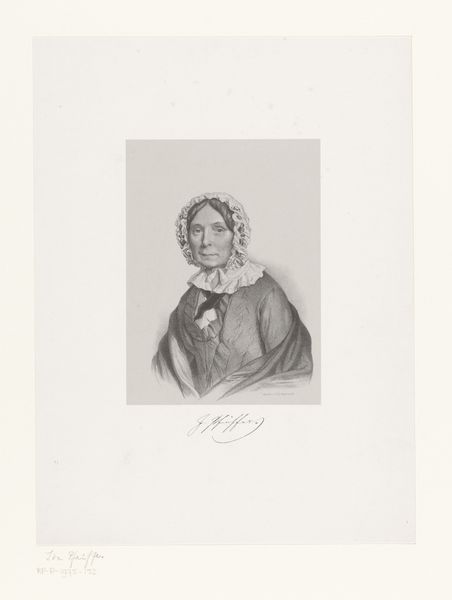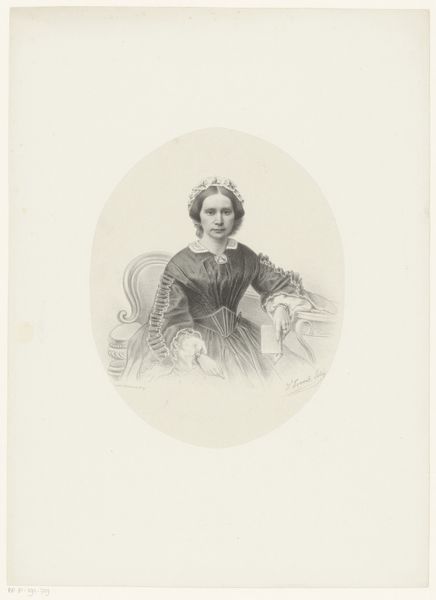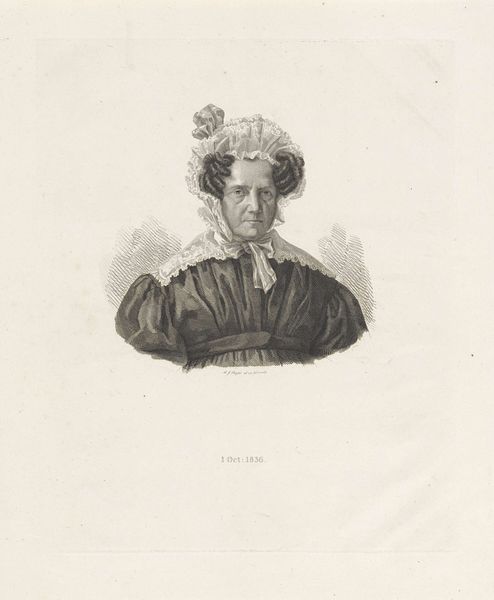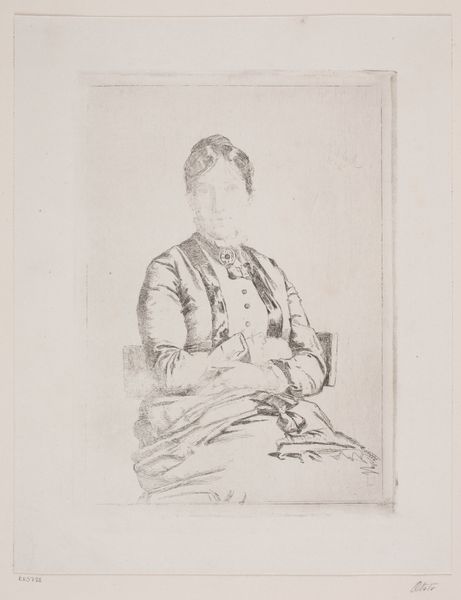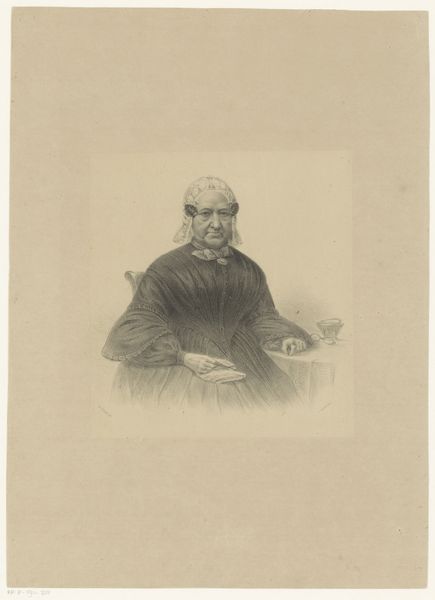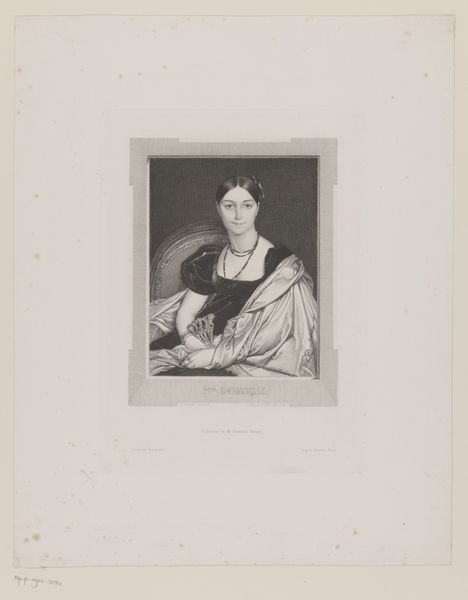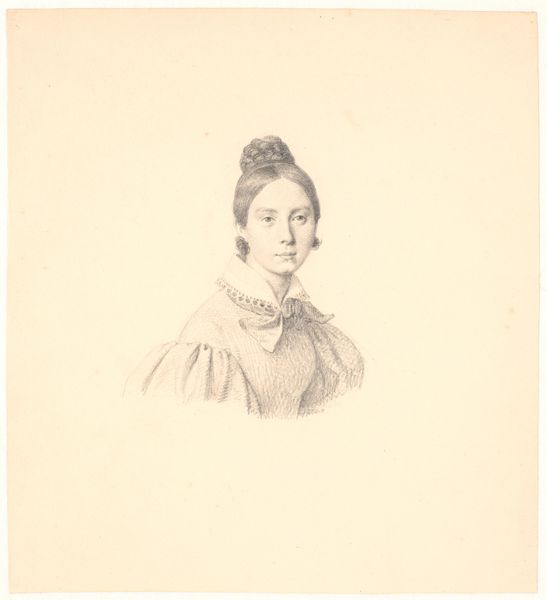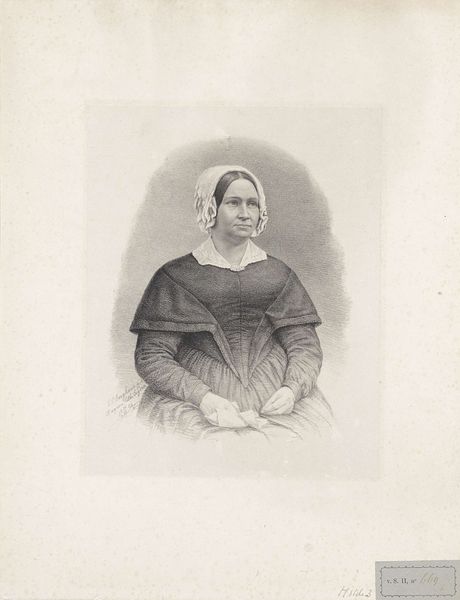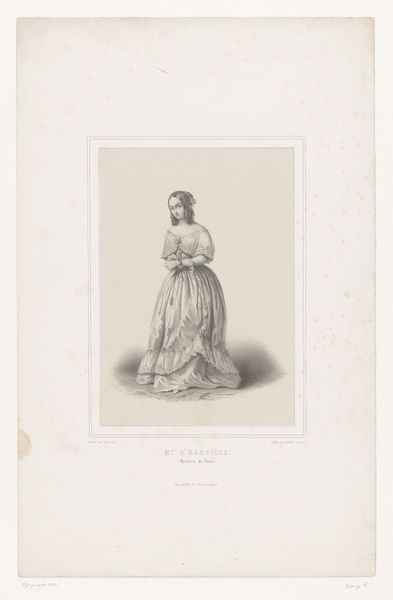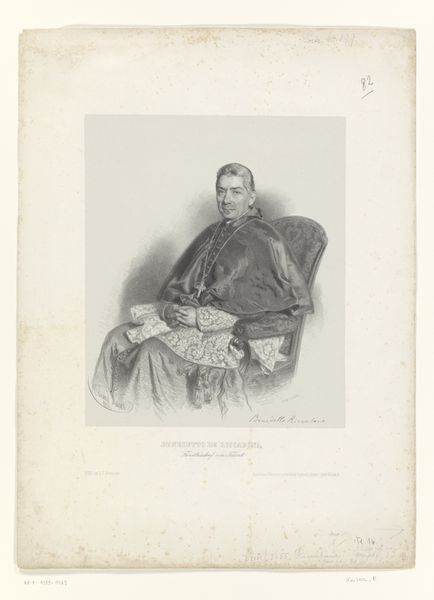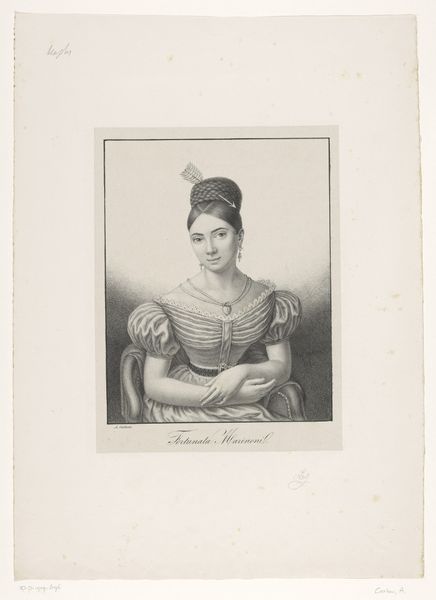
drawing, graphite
#
portrait
#
drawing
#
graphite
#
academic-art
#
realism
Dimensions: height 485 mm, width 355 mm
Copyright: Rijks Museum: Open Domain
Curator: This is an intriguing piece: "Portret van onbekende vrouw," or Portrait of an Unknown Woman. It was produced sometime between 1822 and 1893 by Willem Troost and is held here at the Rijksmuseum. Editor: There's a quiet austerity to it, don't you think? The soft greys achieved in graphite create a somber mood. I’m also interested in the detail within the costume. It looks very carefully wrought. Curator: Absolutely. This drawing exemplifies academic art of the time. Note how Troost employs realism to portray not only her likeness, but likely her social position through details like the clothing and particularly the elaborate head covering. Editor: You’re right, there's an undeniable emphasis on representing fabrics – the drape of her shawl, the pattern of her necktie – it speaks to the significance of textiles in portraying status and perhaps the laborious process of their creation. Consider how such drawings played a part in distributing ideas for making these garments to a broader audience. Curator: And the very fact she is seated, in a finely ornamented chair, reinforces the conventions around portraying status and the significance of portraiture at that time in affirming identity and commemorating individuals. This was the beginning of more public life and the growing access to portraiture in Holland at that time. Editor: Her hands also draw me in. There is so much skill visible in depicting those folded hands – almost as though they tell a story themselves. I keep thinking about the hands of the woman that crafted the textiles she's wearing too. It's not an ostentatious picture, but it still carries this strange sense of presence. Curator: Precisely. It invites contemplation, encouraging us to consider her narrative within the wider societal norms of the era and perhaps, even question why she remains an "unknown woman" to us. The work raises fascinating questions about visibility, historical record, and identity. Editor: Indeed. It encourages a kind of social archeology – prompting us to think more deeply about who produced what and for whom, especially when considering even something as seemingly simple as this graphite drawing. It adds further depth and relevance to that time.
Comments
No comments
Be the first to comment and join the conversation on the ultimate creative platform.
